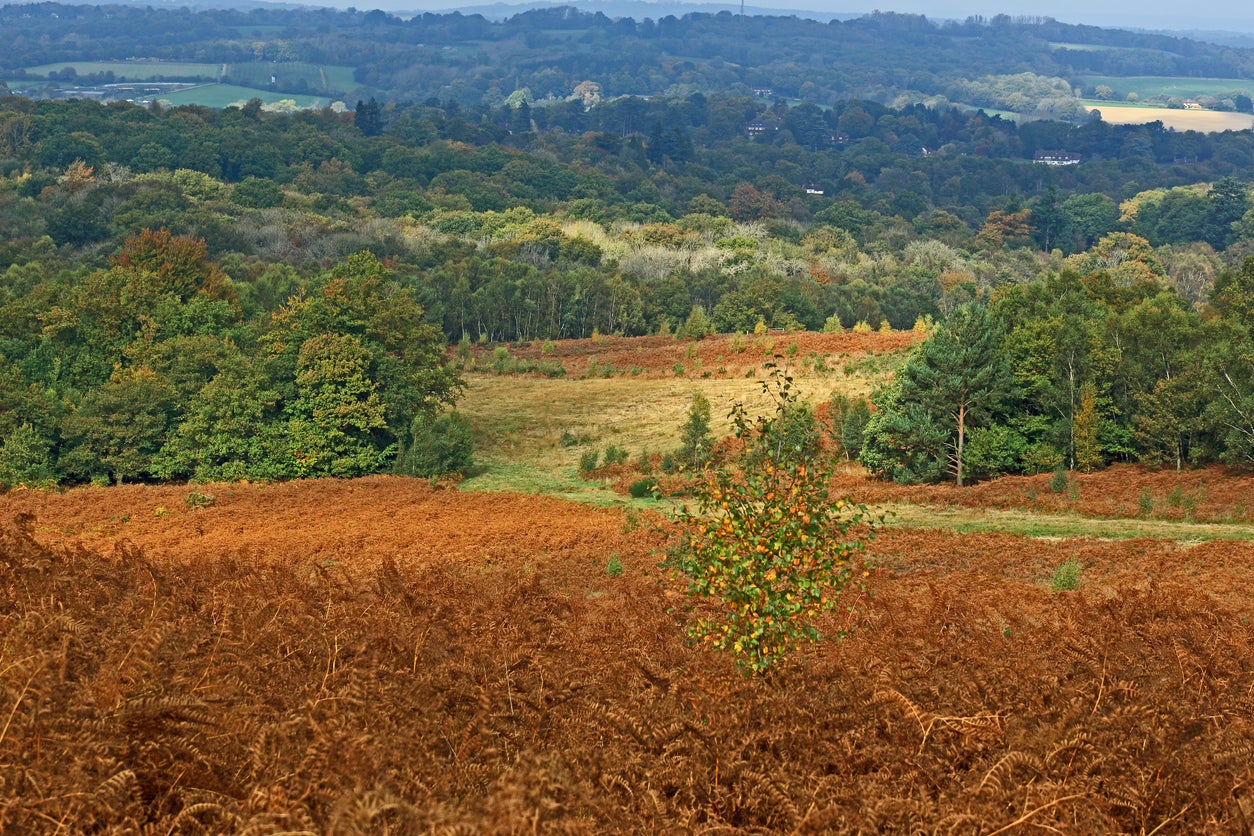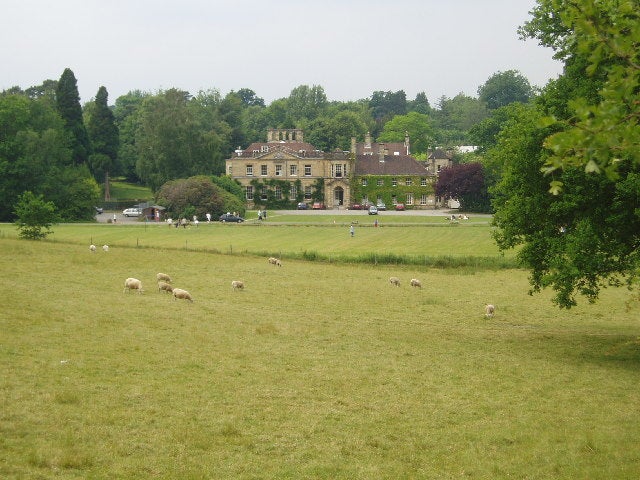The Independent's journalism is supported by our readers. When you purchase through links on our site, we may earn commission.
Welcome to my home town: How growing up in the Hundred Acre Wood prepared me for lockdown
Village life in Forest Row turned out to be the ultimate pandemic preparation, says Anna Prendergast

Your support helps us to tell the story
From reproductive rights to climate change to Big Tech, The Independent is on the ground when the story is developing. Whether it's investigating the financials of Elon Musk's pro-Trump PAC or producing our latest documentary, 'The A Word', which shines a light on the American women fighting for reproductive rights, we know how important it is to parse out the facts from the messaging.
At such a critical moment in US history, we need reporters on the ground. Your donation allows us to keep sending journalists to speak to both sides of the story.
The Independent is trusted by Americans across the entire political spectrum. And unlike many other quality news outlets, we choose not to lock Americans out of our reporting and analysis with paywalls. We believe quality journalism should be available to everyone, paid for by those who can afford it.
Your support makes all the difference.During lockdown, many of us made the pilgrimage back to our family homes – and rediscovered them through fresh eyes. Part guide, part love letter, “Home towns” is a new series in which we celebrate where we’re from. After all, it could be a while before we can go anywhere else…
Mention Forest Row outside of Forest Row, and you’ll likely be greeted with barely-stifled sniggers and side-eye. The village’s quirky congregation of Steiners and Scientologists, Mormons and druids, hippies and hipsters has earned it a widespread reputation as more weird than wonderful. So when people ask me where I grew up, I’ll often tell them the Hundred Acre Wood instead – you know, where Winnie the Pooh lives? Sometimes, I’m met with a blank stare, as if I’ve just said I subsist on a diet of honey and hunt heffalumps for fun, but mostly the idea garners delight. Despite A A Milne’s moniker, Ashdown Forest is actually 6,500 acres of lowland heath and ancient woodland, which sets the scene in the author’s enchanting tales of Pooh bear and Christopher Robin.
Forest Row, or “Frow”, as the locals affectionately call it, sits on the northern edge of Ashdown Forest and is split down the middle by the A22. But what a map won’t show you is the network of “ley lines” that supposedly run through the area, demarcating channels of energy which connect historical landmarks and, depending on who you ask, serve as guides for alien spacecraft (yes, really). Unsurprisingly, the area attracts liberals and ley-hunters alike, but it’s not just for those who worship at the secular altars of Rudolf Steiner (it lays claim to the oldest Steiner school in Britain) or L Ron Hubbard: Forest Row is also home to rock ‘n’ roll deities like Ronnie Wood and Jimmy Page (find them at local pizzeria Java & Jazz); and Game of Thrones’ Stannis Baratheon (known as Stephen in these parts), who prefers Prosperity, the Chinese restaurant up the road. Cate Blanchett even used to drop in on now-closed Taffels for coffee.

My childhood was spent in a house so remote it still doesn’t show up on Google maps, three miles away from the village – close enough to develop my own relationship with Forest Row, but far enough to remain an outsider. I spent my adolescence plotting my escape from this bucolic bubble: pass driving test, get a job, buy a ticket, board a plane.
But when lockdown hit, my hometown didn’t offer a haven to which I wanted to escape for the duration: it did one better, equipping me with a rock-solid support system, a skillset I could fall back on wherever I find myself, and a love of city life experienced only by those forced to spend long periods of time in the countryside.
When I was 17, I got a job waitressing at Taffels, a family-run coffee shop in Forest Row where I fell in love repeatedly: with new friends, their unattainable older brothers (jokes about which I’ll endure till I die), the job itself, the village and its eccentric inhabitants.
In return, the village enveloped me into its community, and 10 years later the people I met in my first few weeks there remain my closest friends. They’ve been a life raft amid the stormy waters of pandemic-induced heartache, redundancy, grief and isolation, and this is as much a love letter to the people who make the place as the place itself – it’s true what they say, it really does take a village.
The forest and its eponymous Row has maintained a sense of nostalgia and romance when I return
When I lost my job at a magazine last summer as a result of Covid-19, not only could I lean on those friends, but I drew on the waitressing skills I’d gained at Taffels and picked up shifts at a restaurant near my flat in London. People wince when you tell them you’ve lost your job; they virtually cringe out of their own skin when you tell them you’ve gone from senior editor to front of house staff. But I loved it: it gave me a renewed sense of purpose, new friends and, frankly, a much-needed financial cushion. I’d never have been open to that opportunity had it not been for the Frow family that turned a job into a joy.
Growing up somewhere so removed from civilisation arguably prepared me better than most for this year, too. My family’s home is the definition of ‘in the sticks’, and as someone who didn’t take naturally to driving (it took me 18 months, two instructors and three attempts to pass my test) I felt perpetually stuck as a teenager. My resulting aversion to the countryside conversely fuelled my love of London, the city I’ve lived in for five years and where I willingly spent the entirety of lockdown.
It’s an immense privilege to be able to choose between forest and flat, but it never felt like a difficult decision, for which I’m grateful. Many felt trapped in the city, but it was one of the few things that provided stability and contentment for me. As a result, the forest and its eponymous Row has maintained a sense of nostalgia and romance when I return – now it’s somewhere I get to go, rather than somewhere I have to be. Once restrictions lift and you get to go, too, here’s how to find the best bits.
Eat up
A biodynamic, organic farm cooperative between Tablehurst and Plaw Hatch produces the best locally sourced ingredients, with two farm shops bursting with fresh veg, sausage rolls and raw milk – pick up a loaf from Cyrnel Bakery and you’ve got the perfect picnic (order in advance, there are queues out the door most mornings). Java & Jazz reinvents itself every few months, but the Italian menu remains consistent, with great pizza and good coffee. Head to Khan’s for the best Indian takeaway in town, and venture a couple of miles out of the village towards Hartfield for hearty gastropub The Hatch, where dogs are welcome.

Drink and dance
A band of brothers opened Hop Yard microbrewery a few years ago, using the space to host yoga classes by day and live music by night (reggae legend Natty and the Rebelship played here in 2019). Frow locals traditionally spend Christmas Eve here, huddled around the fire-pits and warmed by wood-fired pizza, but the outdoor space also makes it one of the most popular spots in summer for a craft beer and street food pop-ups. Forest Row Festival takes place at the end of summer, a lively weekend of spiritual speakers, storytellers, food tastings, free workshops (dub flow yoga anyone?) and live music. Funkee Junkee is the epitome of dad rock, but it gets the crowds on their feet every year with classics like Come on Eileen and Sweet Caroline (and all the mums fancy frontman Gary). Dates for 2021 TBC.
Take a stroll
Stomp through clumps of fragrant pines at Gills Lap, loop around Old Lodge nature reserve, track down Pooh Sticks Bridge, play a round of golf on the two 18-hole courses, give Tablehurst’s saddleback piglets a backscratch or follow the bike trail from Forest Row to Groombridge... There are endless walks here, great for families, birdwatchers and picnic-spot-seekers (a local favourite is Lintons car park, a meditative clearing known as the viewpoint where people travel to watch the sun go down over the heath).

Shop independent
Forest Row’s high-end hippies drop off their preloved designer clothes at Sophie’s Shop, where Sophie herself handpicks everything that makes it to the rails, and pick up vegan, carbon-negative candles at lifestyle shop Stil (which smells as good as it looks). One The Square is a lovely, light-filled communal space-slash-coffee pitstop, where Magda teaches workshops and sells locally made artisan interiors. The Mansion Market is held at Michael Hall (the Steiner school) on the second Saturday of each month, and the wholesome, hand-made stalls give visitors an insight into the village’s way of life.
Stay over
While there are few boutique hotels or big brands down in this neck of the woods, there’s an abundance of quirky Airbnbs such as this converted 19th-century chapel, or an intimate log shed for two where the only neighbours are the Belted Galloway cows in the fields (making it a favourite for couples).
In East Grinstead (which is a 15-minute drive away and has a direct train line to London), there's Gravetye Manor, a gorgeously grandiose Elizabethan estate which is at its most sublime in summer. Find labradors padding around the garden and horticultural experts pruning peaches in the greenhouse, which will later be plated up for pudding (the peaches, not the labradors).
Join our commenting forum
Join thought-provoking conversations, follow other Independent readers and see their replies
Comments